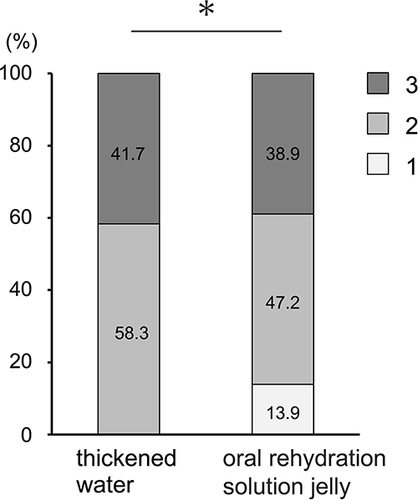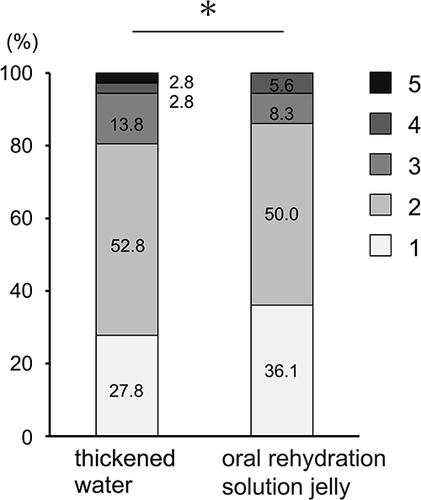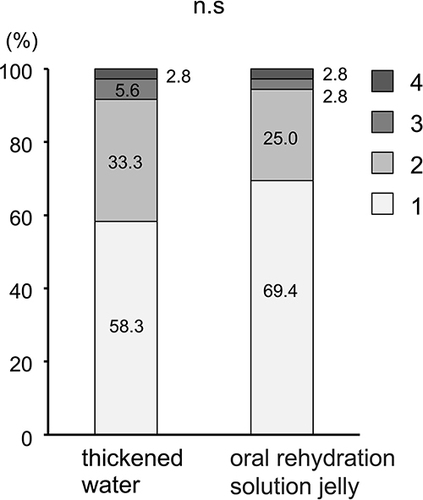Figures & data
Table 1 Patient Characteristics (N=36)
Table 2 Dysphagia Severity Scale and Functional Oral Intake Scale Scores
Table 3 Comparison of Thickened Water and Oral Rehydration Solution Jelly
Figure 1 Distribution of the position of the tip of the food bolus just before swallowing thickened water or oral rehydration solution (ORS) jelly. In the case of thickened water, the swallowing reflex was most frequently induced in the area between the distal part of the oral cavity and the vallecula of the epiglottis. With the ORS jelly, the same tendency was observed. However, some jelly was partially retained in the oral cavity (p<0.05). 1: in the oral cavity, 2: from the distal part of the oral cavity to the vallecula of the epiglottis, 3: from the distal part of the vallecula of the epiglottis to the pyriform sinus. *p<0.05.

Figure 2 Pharyngeal residue after swallowing. The thickened water group included one patient (2.8%) with a score of 5 (more than half remained in the pharynx after swallowing), whereas the oral rehydration solution jelly group included patients with scores ranging from 1–4 (p<0.05), with no patient scoring 5. Yale Pharyngeal Residue Severity Rating Scale: 1, none; 2, trace; 3, mild (less than one-quarter); 4, moderate (less than half); and 5, severe (more than half). *p<0.05.

Figure 3 Penetration-Aspiration Scale results. Thickened water and oral rehydration solution jelly showed no aspiration, and 41.7% and 30.6% (total of those with a score 2 or above), respectively, showed penetration (p=0.062). 1, none (material does not enter the airway); 2, material enters the airway, remains above the vocal folds, and is ejected from the airway; 3, material enters the airway, remains above the vocal folds, and is not ejected from the airway; 4, material enters the airway, contracts the vocal folds, and is ejected from the airway.

